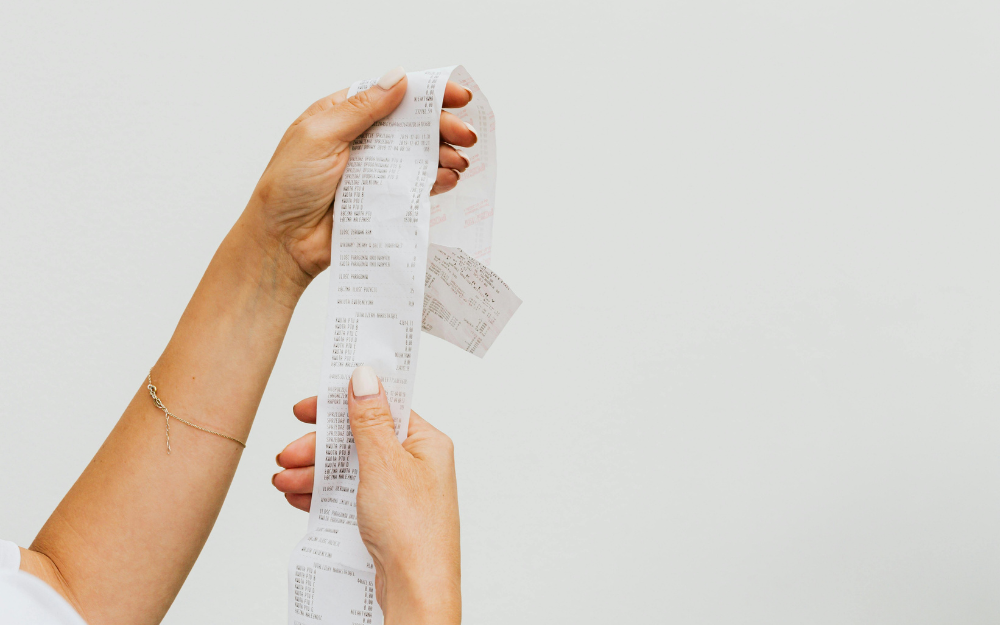Track your spending
Tracking your spending is a way to take control of your money. Knowing where your money goes can help you spend less and save more.
1. Track your spending and expenses
First, get a clear view of where your money is going day to day.
Choose how long to track
One week for daily spending
Start small by recording your spending every day for at least a week. This way you can see all the money going out.
Fortnightly or monthly for recurring expenses
If you have some weeks or months with more expenses, commit to a 'financial fortnight' or 'money month'. Tracking over a longer period gives you a more realistic picture.
Record what you spend
Get transaction statements
When you use a card or phone app to make a purchase, every transaction is recorded. Access these transactions through your online banking or hard-copy statements.
Use a phone app
An app is an easy way to track your spending at the time you spend. You can also set spending limits and reminders, and see your expenses at a glance.
Write it down
Record the amount, item (or store name) and date. Do this for both cash and card purchases as you spend. Or keep receipts and do your tracking at the end of the day.
Do it every day
Don't worry about changing your spending habits straight away. Just record day by day.
To stay motivated, try tracking your spending with a partner or friend.
2. Look at your spending habits
At the end of your tracking period, look at your recorded transactions to see where your money is going.
It may surprise you how much small things can add up. You could also discover hidden costs. For example, account fees, subscriptions you don't use anymore, or mistaken transactions.
You often find that, just by being more aware of your spending, you can start to spend less.
If you want to spend more mindfully, try taking a moment before you buy something. Ask yourself: Do I need this right now? Can I get it cheaper somewhere else? This helps you be in control of your spending choices.
3. Change your spending habits
Now you know where your money goes, making small changes can make a big difference. You don't have to do everything at once — pick one spending habit to start with.
Separate needs from wants
Look at all your transactions and highlight what are 'needs' — essential items you need to live.
The ones left over are 'wants'. These are the things you could cut back on or live without for a while, to save money. Is there anything you would like to change?
Find a quick win
Cancel anything you don’t need, like a subscription or membership you’re no longer using. Or try cutting back on one small, frequent expense, like takeaway food.
Start a savings habit
With the money from your quick win, start saving for the things that matter most.
Set up a savings account or an emergency fund.
Set limits and reminders
Knowing how much you spend on wants, try setting a realistic limit for the next week or month. This can help you avoid overspending.
Set calendar reminders for when regular expenses are due. Then put aside money to cover these payments.
Do a budget
Now you know where your money is going day to day, take it a step further and do a budget. This helps you prioritise where you want your money to go.
Having a budget lets you see how you're going month to month, and year to year. So it is easier to stay on top of expenses and save for the things you enjoy.
For a step-by-step guide, see how to do a budget.
Reproduced with the permission of ASIC’s MoneySmart Team. This article was originally published at https://moneysmart.gov.au/budgeting/track-your-spending
Important note: This provides general information and hasn’t taken your circumstances into account. It’s important to consider your particular circumstances before deciding what’s right for you. Although the information is from sources considered reliable, we do not guarantee that it is accurate or complete. You should not rely upon it and should seek qualified advice before making any investment decision. Except where liability under any statute cannot be excluded, we do not accept any liability (whether under contract, tort or otherwise) for any resulting loss or damage of the reader or any other person. Past performance is not a reliable guide to future returns.
Important
Any information provided by the author detailed above is separate and external to our business and our Licensee. Neither our business nor our Licensee takes any responsibility for any action or any service provided by the author. Any links have been provided with permission for information purposes only and will take you to external websites, which are not connected to our company in any way. Note: Our company does not endorse and is not responsible for the accuracy of the contents/information contained within the linked site(s) accessible from this page.


